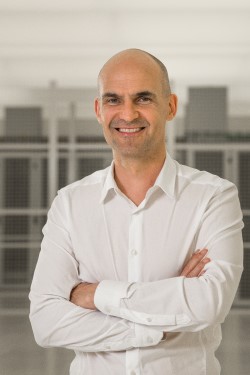Switch Datacenters Pays Its Clients for Server Waste Heat
Switch Datacenters is one of the first data centers in Europe to provide a financial incentive for directly usable residual heat. For this purpose, it uses existing Direct Liquid Cooling (DLC) techniques to cool servers. Cooling water is heated to a temperature of 40 to 60 degrees, which will be used directly to heat offices and homes. Customers opting for DLC cooling would receive a discount of up to 30 percent on electricity costs.
All electricity entering a data center is converted into heat. For practical reasons, cooling equipment is usually located far from the heat sources (processors, memory and hard disks). As a result, the temperature of the cooling water is relatively low at 20-25C. This is not optimal for heating homes, for example.
During an upgrade of Switch Datacenter’s facility in Woerden, the Netherlands, a solution was chosen whereby residual heat with a higher temperature of 40 to 60 degrees can be used as a standard. Instead of cooling the servers with conventional room coolers, the choice was made to cool directly at the server as much as possible in order to ‘harvest’ the highest temperature from the servers. The more usable heat to be produced the better and the higher the financial compensation.
With a financial incentive, Switch Datacenters hopes to encourage large cloud providers to use DLC or other forms of high-temperature cooling. It also wants to set an example for other data centers to follow the same strategy. This can be very positive for the data center industry as a whole, according to Switch Datacenters.
DLC Technology

“Our data centers generate a lot of directly usable heat from servers and can therefore replace many gas connections,” said Gregor Snip, CEO of Switch Datacenters.
Today there are several variants possible for Direct Liquid Cooling. Customers can use liquid-to-chip modules but also other cooling methods such as Immersion Cooling. These are proven techniques that have been offered by multiple parties for years already. DLC solutions are also increasingly being delivered ready-made by server manufacturers such as Dell, Lenovo, Supermicro, Gigabyte and HPE.
Switch Datacenters already introduced Immersion Cooling in its data center in 2008. At that time, only the PUE was being discussed and residual heat was not important. As a result, customers ignored this technique. Now that energy consumption and sustainability are high on the agenda of large companies, Switch Datacenters predicts that DLC techniques will be widely deployed in data centers.
Data centers already using DLC let the heated water cool down from 40 to 60 degrees via a cooling tower chiller or dry-cooler on the roof. This is then returned to the servers via the closed water circuit. This higher temperature heat can be used directly and efficiently. Because temperatures of 40 to 60 degrees are common at DLC, it would be ideally suited for heating offices and homes, without the additional need for heat pumps or gas boilers. Data centers can therefore become the future heaters of the city.
With DLC, a much higher cooling capacity is available, which means that users of the data center in most cases require much less floor space for servers. This can be particularly beneficial for data centers in cities. For example, Switch’s data center in Woerden, the Netherlands can increase the maximum capacity from 6MW to 15MW in the same building.
Heating Thousands of Homes
The data center had been in use by various banks since 1980. In recent years, Switch Datacenters leased the data center to IBM. After many considerations about the future of the data center, the choice was made to continue with a ‘Cloud-To-Heat’ strategy and to sell the generated heat to third parties. These revenues will be passed on to the customers.
“Our data centers generate a lot of directly usable heat from servers and can therefore replace many gas connections,” said Gregor Snip, CEO of Switch Datacenters. “If all the racks in the data center use DLC, we will be able to heat a large part of the homes in Woerden. We are really talking about thousands of homes.”
For Snip, it is clear that DLC is a solution that only has winners. “Customers who choose DLC get paid for it and homes are heated in an environmentally friendly manner without the use of gas.”
Sustainability, Gas Transition
Snip has noticed that interest in combining DLC and the use of residual heat has increased significantly since the first reports about it.
“I get questions from colleagues in the data center sector who have been looking at the issue of residual heat for years,” added Mr. Snip. “Thanks to our approach, there is a sustainable future perspective, especially when there are homes and offices near the data center. It’s a different way of thinking, but with this reliable technology we can really speed up the gas transition and thus do our bit for the climate goals.”
This article was also published to the HostingJournalist WhatsApp channel.
Subscribe here for free and stay informed, max one message a day.



Comments are closed.